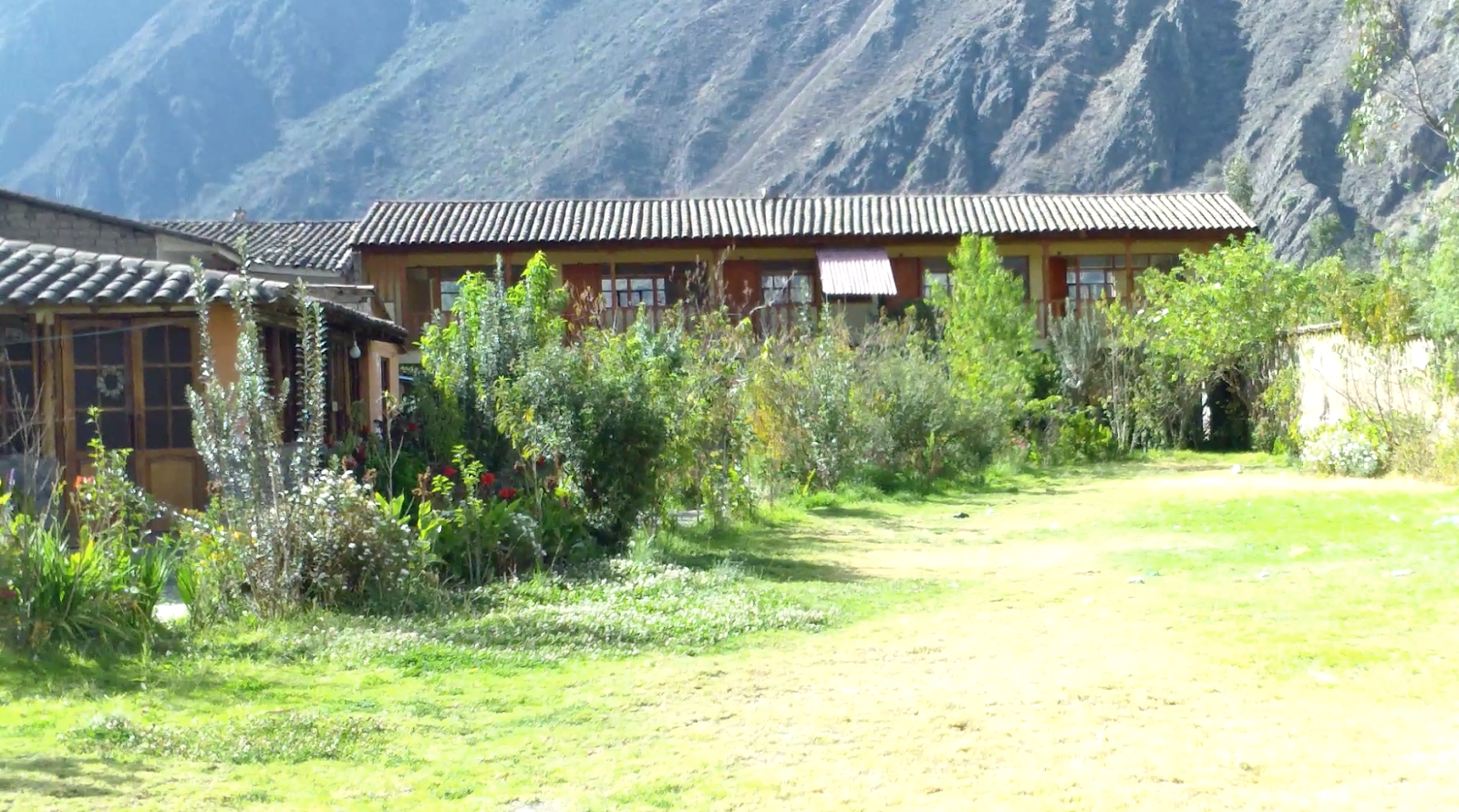Runakuna - the people
Katty (KAH-tee) Vargas Saire - owns the Chaska Wasi (Star House) hostal; thin, animated, gregarious, the goddess of Peru Time - if she gives you a time and date you know it won't happen then if at all. She arranged the Pumamarka house for me.
Ricardina Lopez Huallpa - owns the Pumamarka house; shrewd eyes, laughs a lot, if you joke she'll probably get it; rotund, around fifty, recently back from living in Argentina, where she met Ivan. Strong character. Huallpa means "chicken" in Quechua. She has 20, plus ducks.
Ivan - Ricardina's man, good natured, stout but strong, twenty years in the Peruvian army chasing the Sendero Luminoso guerrillas around the mountains but never killed anyone - he was a technician; rather sympathized with the Sendero because they were for the people. Pure blood Andean.
Alicia Teran Quispe - co-owner of the Bosque house in the San Isidro district, as well as a new apartment complex by the mercado and her artisan shop by plaza Manyaraki below the principal ruins. Lean, intelligent, friendly, tough. Two grown daughters and a young son. Quispe means "crystal."
Ramon Barriga Huaman - Alicia's man; wiry, somewhat taciturn, twenty years with the INCA, National Institute of Culture; they "restore" Inka ruins for the government. This requires a lot of construction with stone and mud, attention to detail, knowledge of Inka architecture, and hard labor. Huaman means "hawk."
Flora Barriga Huaman - Their oldest daughter, bespectacled, serious, university graduate, accredited archaeologist, works for the INC as an administrator but is taking the month off to volunteer with the Tierra y Libertad - Land and Liberty - party for the Ollantaytambo elections in October.
Abelard Barriga Huaman - their son, looks about nine, acts older; dealt with our mototaxi driver with a man's authority. Won't brook condescension.
Alicia Quispe's younger daughter - around twenty, graduated from the U in Cusco in Tourism, has a year-old girl named Brianna.
David (Dah-VEED) - Katty's Italian boyfriend and employee at Chaska Wasi; came to Peru to escape a spiraling European economy; round-headed, genial, warm, maybe ten years younger than Katty, which seems to be a point of contention.
Alegria - the cautionary gringa.
Jorge (HOR-gay) or Tupaq Yupanqui - young street artist, Quechua first-language (as are most of these people), educated in art at the university in Arequipa, far the to the south; hangs out with the "jeepee" (hippy) street artists in Manyaraki a few yards from Alicia, who doesn't like them. Walks the streets hawking watercolors of cityscapes, a tough way to make a living. I eventually bought one because he taught me some Quechua; he claimed it was of Ollantaytambo though it clearly was not. He's listed because I run into him a lot and he may play some part. The whole hippy artist crew and I have a slightly uncomfortable friendly acquaintance.






























